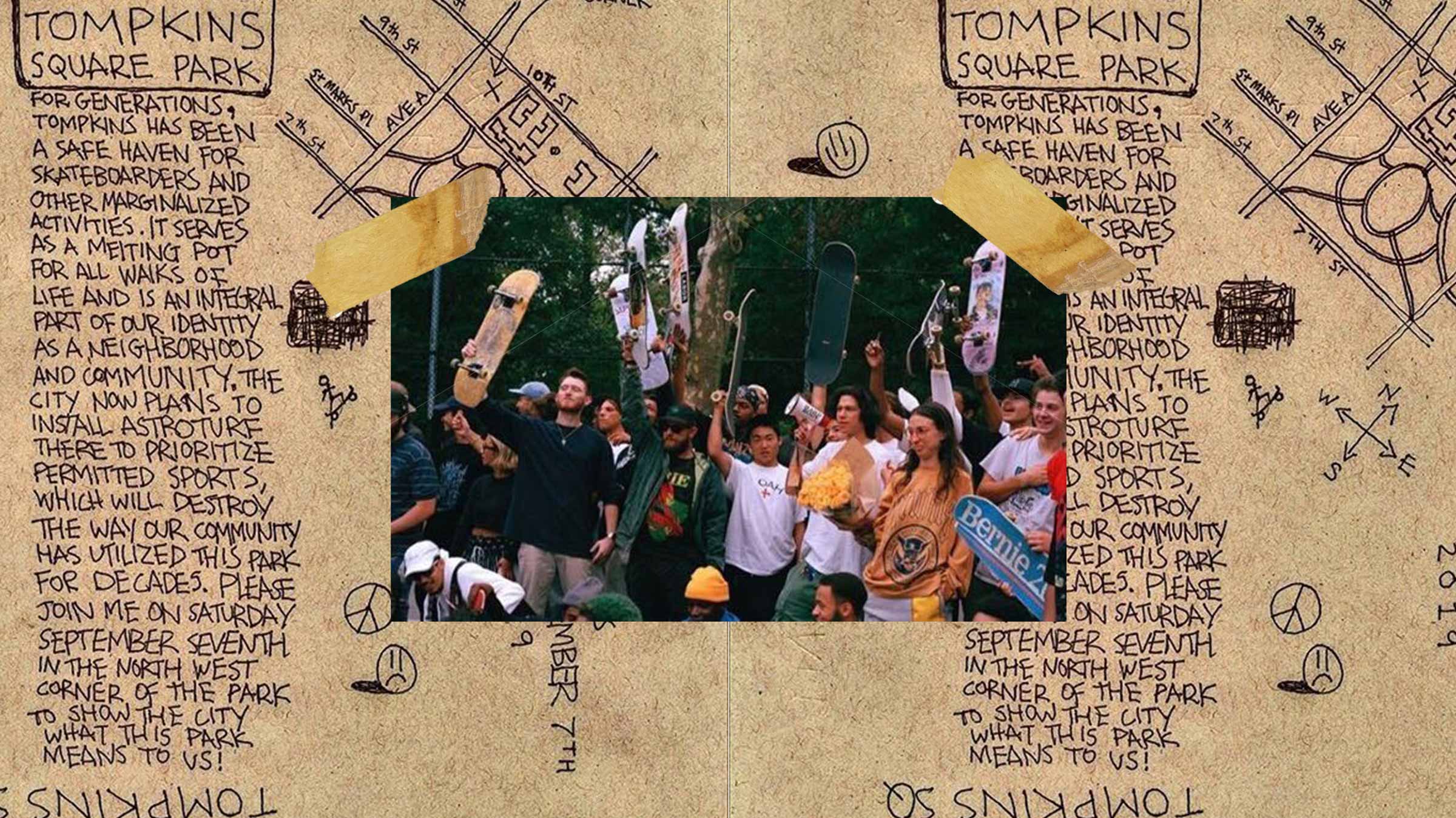Almost 30 years after the Tompkins Square Riot, a new protest headed by skaters preserves the sanctity of a downtown safe haven.
Over the past couple of decades, Tompkins has fostered a community of skateboarders that religiously frequent the concrete lot on the South Eastern side of the park. This DIY skatepark has been home to skateboarding competitions and after-school sessions alike. With all the new infrastructure and gentrification in New York, easy accessibility to skateboarding has been increasingly rare—Tompkins is a staple to New York skateboarding largely out of necessity for the physical space. So, when the City announced their plans to renovate Tompkins Square Park, installing astroturf over the skaters’ section, the community was outraged. However, this land dispute is the most recent in a long history of conflicts over physical space in New York’s East Village.
Until the late 18th century, like much of the land that makes up the East Village, Tompkins Square Park was originally home to one of Manhattan’s largest salt marshes. Salt marshes are formed when grassy terrains are flooded with seawater. Interestingly, the newly saline environment, after adapting to its new composition, begins to flourish. Salt marshes are places of prosperous growth and speedy change; they’re areas of “high productivity” and busy ecosystems thanks to the unique combination of bacteria and flora that thrive in these biomes. Salt marshes are also home to unusual inhabitants—sea crabs living miles from the coast, plants that filter toxins from the brackish water.
It’s no surprise that Tompkins Square Park has a long history of serving as the setting to breaking points, moments of cultural change in which ownership of the physical land has been the key issue. Often, these disputes are settled through the unjust usurping of land. As early as the 17th century, European colonists began to systematically expel the Native Americans that inhabited the land that now constitutes New York City. By the early 19th century, New York city fortified the East Village to prepare against the threat of turf battles with Britain caused by the War of 1812. Tompkins was inaugurated as an official park in 1840 and named in honor of New York governor, Daniel D. Tompkins, who freed slaves in New York State a few decades earlier.
In more recent history Tompkins has become synonymous with countercultural movements. The park was a safe haven and meeting place for punks and artists—people like Patti Smith and David Wojnarowicz, the free spirits of the ՚60s and the roaming Downtown Artists of the ՚80s. It’s hosted protests, too, like the famed Tompkins Square Riot, where police and protestors engaged in a two-day violent disagreement in early August 1988 after the City imposed a curfew, hoping to disperse the homeless population that used the park as refuge. After the Tompkins Square Riot, amid over 100 counts of police brutality, the City yielded its more outright attempts to reclaim the land and began to rely more on institutional forms of force such as patrolling and issuing tickets and fines.
The City’s recent threat to reclaim the skatepark and displace its users earlier this year with plans to install an astroturf baseball field is no surprise given the history of the area. The proposition, luckily, was met with immense resistance as skaters and parkgoers refused to comply. Local Tompkins Square Park skater Adam Zhu initiated a petition to eradicate the City’s plan which quickly amassed over 30,000 signatures. “[one] thing I like and idealize about NY are little pockets of the city…one of them happens to be Tompkins Park. I’ve met some of the most interesting people in my life in that corner of the park,” William Strobeck, skate videographer and director wrote to me. “Don’t make me miss NY more than I already do,” he concludes, reminiscing on the city’s changes. A rally was scheduled for this past Saturday at Tompkins to express the community’s frustrations, but the night before, a Parks Department official announced that the plans had been changed, that Tompkins would not be the site of the new turf field.
The rally carried on but not as planned. Instead of protests, a celebration was in order. A few hundred people came to the event to skate or listen to live music. The party continued throughout the weekend. Tompkins Square Park has been saved by the skate community, but the long, strange history of the park’s land disputes and continual growing concerns of gentrification spread across the city suggest that this conflict won’t be the park’s last.







